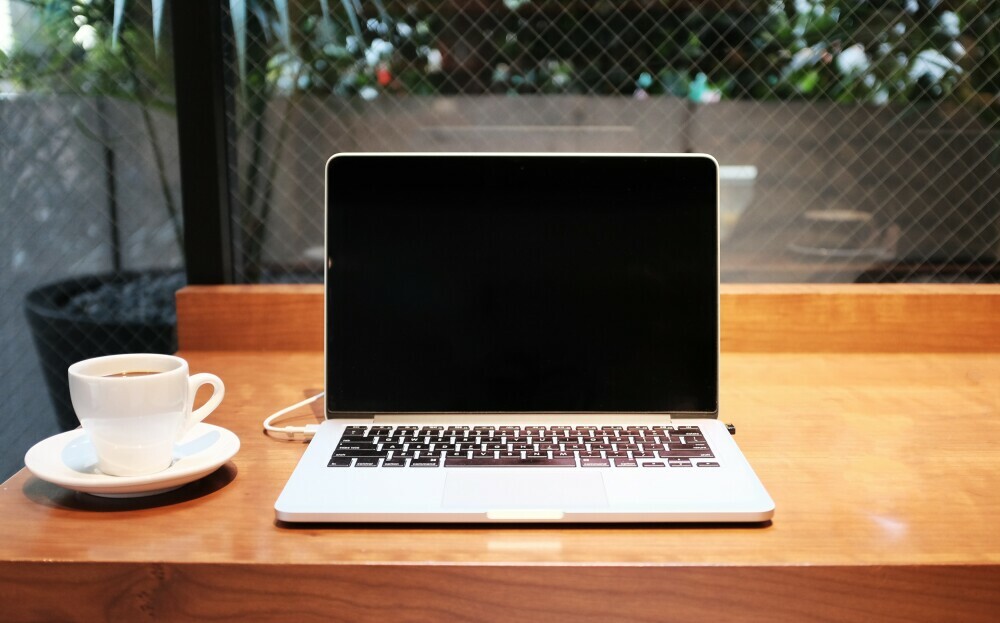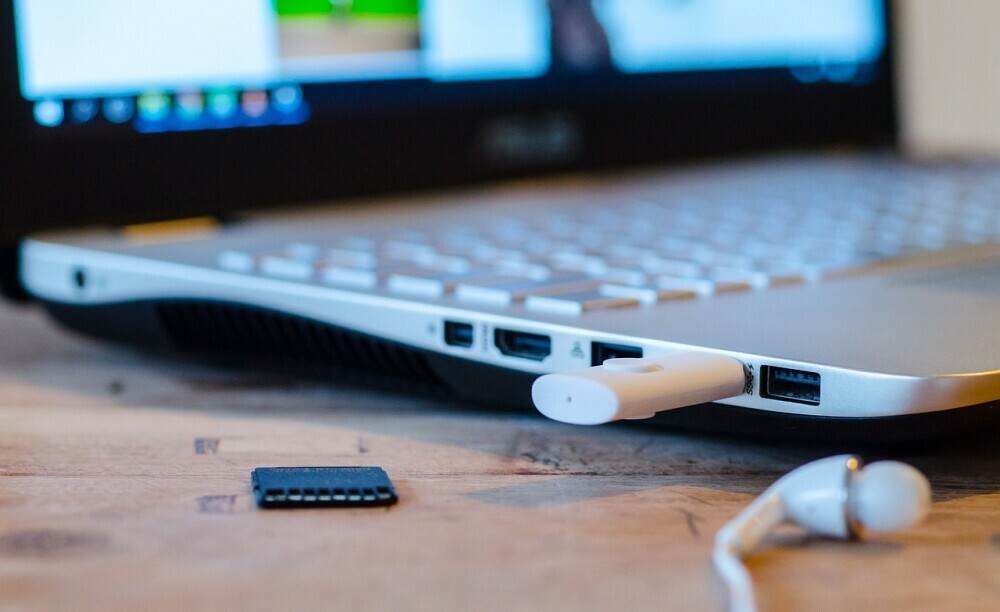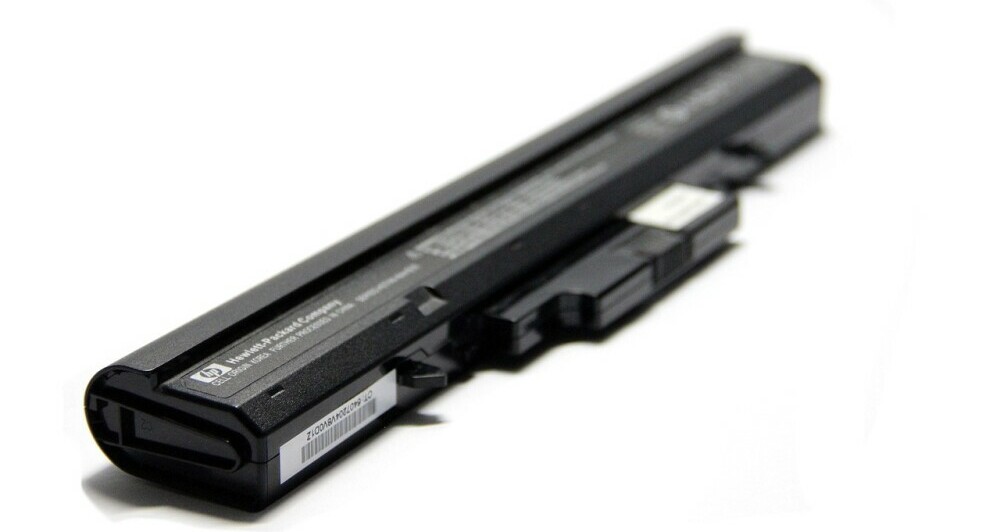
Understanding laptop specs can be a daunting task for people who are not IT gurus. In a typical laptop specification sheet, you will find a lot of highly technical terminology that may not always make sense to a lot of users out there. However, understanding the laptop specifications is crucial in choosing a laptop that meets your needs, so that you can know what you are getting and what you can expect out of the laptop. This post is the last in a 3-part series where I try to explain common terminology in laptop spec sheets and what they mean. In this post, we will delve into deciphering specifications related to outer build, connectivity, multimedia, and battery.
Chassis Choices: How Material Affects Durability and Weight
The case (or chassis) plays a crucial role in determining the device’s durability, weight, and overall performance. The laptop specification usually provides the material and color it comes in. Here are some key points to consider regarding case and chassis choices, particularly how the material used can affect durability and weight:
Common Material Choices Today:
- Plastic: Lightweight, cost-effective, can be molded into various shapes. Generally less durable than metal, may show wear and tear more easily.
- Metal (Aluminum, Magnesium, etc.): Offers a premium feel, excellent durability, and good heat dissipation. Can add weight to the laptop, tends to be more expensive.
- Carbon Fiber: Lightweight, strong, and durable. Offers a high-end, premium look. Usually more expensive, may not dissipate heat as effectively as metal.
- Composite Materials: Blend of materials for optimal strength, weight, and cost. Performance varies based on the specific composition.
Durability:
The choice of material significantly impacts the laptop’s durability. Durability is also influenced by the overall design and construction. Reinforcements, hinges, and how internal components are secured within the case contribute to the laptop’s resilience.
Weight:
The weight of a laptop is closely tied to its material composition. Plastic is lighter than most metals, making laptops with plastic cases more portable. However, advancements in engineering have allowed manufacturers to create lightweight metal and composite laptops. Ultra-thin and lightweight laptops often use materials like carbon fiber or magnesium alloys to strike a balance between durability and weight.
Impact on Portability:
The choice of material affects the overall form factor and portability of the laptop. Thin and lightweight laptops are typically more portable, but they might sacrifice some durability. Heavy-duty laptops with metal cases may be bulkier but offer better protection and can withstand rough handling to a greater extent.
Aesthetics:
Material choices also contribute to the laptop’s visual appeal. Some users prioritize a premium, metallic finish, while others may prefer a lightweight and colorful plastic design.
In conclusion, the material of the laptop case is a critical factor in determining both durability and weight. It’s a balancing act for manufacturers to choose materials that provide the right combination of strength, weight, and aesthetics based on the target audience and the laptop’s intended use.
Palmrest, Precision Touchpad, and the Value of a Backlit Keyboard
You might come across these terms in a laptop specification. Here’s an explanation of each:
Palmrest:
- Definition: The palmrest is the flat, horizontal surface located just below the laptop’s keyboard.
- Purpose: It serves as a resting place for the palms and wrists while typing. It is designed to provide a comfortable support area and prevent discomfort during extended periods of laptop use.
- Material: Palmrests are typically made of the same material as the laptop’s casing, which can be plastic, metal, or other materials.
Precision Touchpad:
- Definition: A Precision Touchpad is a touch-sensitive surface that replaces traditional touchpads on laptops. It’s a technology developed by Microsoft to offer improved and standardized touchpad functionality.
- Purpose: Precision Touchpads provide more accurate and responsive input compared to regular touchpads. They support advanced gestures, smooth scrolling, and precise cursor control, making them more user-friendly.
- Features:
-
- Multi-finger gestures: Pinch-to-zoom, two-finger scrolling, three-finger swipes, etc.
- Improved accuracy and responsiveness.
- Consistent performance across different laptop brands.
- Compatibility: Precision Touchpad is a Windows-specific technology. Laptops running Windows 8 and later versions may include this feature.
Backlit Keyboard:
- Definition: A backlit keyboard is a keyboard where the keys are illuminated, usually from the bottom, making it easier to see and use the keyboard in low-light or dark environments.
- Purpose: The backlighting enhances visibility, allowing users to type in dimly lit conditions without relying on external lighting sources.
- Adjustability: Many backlit keyboards offer adjustable brightness levels, allowing users to customize the level of illumination based on their preferences and lighting conditions.
- Colors: While white backlighting is most common, some laptops offer keyboards with customizable RGB backlighting, allowing users to choose from a spectrum of colors.
These features contribute to the overall user experience and comfort while using a laptop. These features can enhance productivity and make the overall computing experience more enjoyable.
Understanding Laptop Ports

Laptops come equipped with various ports to connect external devices and peripherals. Here’s an overview of commonly found ports, including USB types, audio, and display connections.
USB Ports:
USB Type-A: Standard USB port, rectangular shape. Commonly used for connecting peripherals like mice, keyboards, external hard drives, and other accessories. The higher the USB version, the higher the data rates that it supports. For example, USB 3.2 supports transfer rates up to 5Gbps, while USB 2.0 is slower, supporting speeds up to 480Mbps. It is common practice today to include both a higher-speed and a lower-speed USB port in a laptop.
USB Type-B: Square-shaped port. Less common than Type-A, often used for connecting certain printers and older devices.
USB Type-C: Reversible, small, and oval-shaped. Versatile port used for charging, data transfer, and connecting various peripherals. USB-C can support high-speed data transfer, power delivery, and video output. A “full function” USB-C port can transfer power, audio, video, and data all simultaneously (as opposed to needing separate ports for charger, monitor, speakers, and a USB flash drive).
Thunderbolt (often in USB-C form): Similar to USB Type-C but supports Thunderbolt technology (a high-speed interface developed by Intel in collaboration with Apple, that combines data transfer, video output, and power delivery into a single, compact port). Enables high-speed data transfer, power delivery, and external GPU connections for graphics-intensive tasks.
Audio Ports:
3.5mm Headphone Jack: Standard audio jack. For connecting headphones, earphones, or external speakers.
3.5mm Microphone Jack: Another 3.5mm jack, usually marked with a microphone symbol. For connecting external microphones.
Combo Audio Jack (Headphone/Microphone): Single 3.5mm jack that supports both headphones and microphones. Found on laptops where space is limited, it can be used for headsets with combined audio and microphone connectors.
Display Connections:
HDMI (High-Definition Multimedia Interface): Rectangular port with a flat bottom and top corners cut at an angle. HDMI has evolved over the years, and different versions have been introduced. The laptop spec will indicate the HDMI version that the laptop supports – higher version numbers support higher resolutions and increased data transfer rates. Connects laptops to external monitors, TVs, or projectors for video and audio transfer.
DisplayPort: Rectangular port with a smaller L-shaped connector. Similar to HDMI, used for connecting laptops to external displays, supporting high-resolution video and audio. As with HDMI, laptops that include DisplayPort functionality will often specify the version of DisplayPort they support.
VGA (Video Graphics Array): Older analog video port with a trapezoidal shape. Legacy port for connecting laptops to older monitors or projectors. Rarely found in new laptops today.
Mini DisplayPort and USB-C/Thunderbolt (with DisplayPort Alt Mode): Compact port similar to USB-C but dedicated to video output. Connects laptops to external displays, often found in ultrabooks and high-end laptops.
Other Common Ports:
Ethernet (RJ-45): Rectangular port with a clip. Connects laptops to wired networks for faster and more stable internet connections.
SD Card Slot: Slot for inserting SD memory cards. Allows users to transfer data from cameras and other devices.
Understanding the various laptop ports is essential for connecting external devices, expanding functionality, and enhancing the overall user experience.
Wireless Capabilities

Modern laptops come with hardware components and standards that enable wireless communication and these are included in the laptop spec. These specifications are crucial for connecting to Wi-Fi networks, Bluetooth devices, and other wireless technologies. Here’s an overview of key wireless specifications you might encounter in a laptop.
Wi-Fi Specifications:
Wi-Fi Standards: Wi-Fi 4 (802.11n), Wi-Fi 5 (802.11ac), Wi-Fi 6 (802.11ax). Higher-numbered standards generally offer faster data transfer rates, improved reliability, and better performance in crowded Wi-Fi environments. Wi-Fi 6 is the latest officially released standard. Note that it is expected that Wi-Fi 7 will be released in the second quarter of 2024. However, as with previous releases, you should have no problem with using Wi-Fi 6 on a Wi-Fi 7 network.
Common Frequency Bands: 2.4 GHz and 5 GHz. Dual-band or tri-band Wi-Fi allows the laptop to connect to networks on different frequency bands. 5 GHz is generally less crowded and offers higher data transfer rates compared to 2.4 GHz.
MIMO (Multiple Input, Multiple Output): Uses multiple antennas for simultaneous data transmission and reception. Improves data throughput and overall Wi-Fi performance. You might see a value like “2×2” in the laptop spec, meaning there are two antennas for transmitting data and two antennas for receiving data.
Channel Width: Refers to the width of the frequency channels used for data transmission. Wider channels can provide higher data transfer rates, but in crowded environments, it’s essential to avoid interference.
MU-MIMO (Multi-User, Multiple Input, Multiple Output): Allows communication with multiple devices at the same time. Enhances network efficiency, especially in environments with multiple connected devices.
Bluetooth Specifications:
Recent Bluetooth Versions: Bluetooth 5.1, Bluetooth 5.2, Bluetooth 5.3. Newer versions often bring improvements in data transfer speed, range, and energy efficiency.
Bluetooth Profiles: Defines the functions and features a device supports over Bluetooth. Different profiles enable specific functionalities, such as audio streaming (A2DP), file transfer (FTP), and hands-free calling (HFP).
Cellular Connectivity (Optional):
4G LTE or 5G: Cellular connectivity for laptops with SIM card slots. Enables mobile internet connectivity when Wi-Fi is unavailable. Useful for users who need internet access on the go.
Other Wireless Technologies:
NFC (Near Field Communication): Enables short-range communication between devices. Used for quick pairing, contactless payments, and data exchange between devices.
GPS (Global Positioning System): Allows the laptop to determine its geographical location. Useful for location-based services, mapping, and navigation.
Considerations:
- Compatibility: Ensure that the laptop’s wireless specifications match the capabilities of your Wi-Fi router, Bluetooth devices, and other wireless peripherals.
- Upgradeability: Some laptops allow users to upgrade Wi-Fi modules or add additional wireless capabilities through expansion slots or USB adapters.
Webcam and Microphone
Specifications of webcams in laptops can vary widely depending on the make and model of the laptop. However, I can provide a general overview of typical webcam specifications that you may encounter.
- Widescreen aspect ratio: this is common for most modern displays and video content
- Resolution: Webcam resolution may typically be indicated in a laptop specification as the resolution description with the number of vertical pixels; for example, “FHD (1080p)” In this case, the webcam is capable of capturing video at “Full High Definition” at 1920×1080 pixels, providing a high-quality image. Higher resolution provides clearer and sharper video quality during video calls and conferences. Standard resolutions include 720p, 1080p, and, in some high-end laptops, even 4K.
- Dual Digital Microphone: Indicates that there are two microphones included. These microphones are digital, meaning they convert sound into digital signals for processing. Dual microphones are often used to improve audio quality by capturing a broader range of sound and providing noise cancellation or stereo recording capabilities

Speakers
The specifications of speakers in laptops can vary widely based on the laptop model, size, and intended use. Here I will provide a general overview of typical speaker specifications that you might find in laptops.
Stereo vs. Surround Sound: Most laptops come with stereo speakers, which provide left and right audio channels. Some gaming laptops or multimedia-focused laptops may feature simulated surround sound for a more immersive audio experience.
Wattage: Common range varies from 1W to 4W per channel. The wattage indicates the power output of each speaker channel. Higher wattage generally means louder and more powerful audio. However, the quality of speakers also plays a significant role in the overall audio experience.
Audio Technology: Laptops may feature various audio technologies to enhance sound quality, such as Dolby Audio, DTS:X, or other proprietary audio enhancements. These technologies aim to optimize audio reproduction for different types of content.
Speaker Configuration: Commonly found setups are 2-channel or 2.1-channel. 2-channel setups refer to left and right speakers, while 2.1-channel setups include an additional subwoofer for improved bass response. Some high-end laptops may feature more advanced speaker configurations.
Frequency Response: Common range is 100Hz to 20kHz. Frequency response refers to a speaker’s ability to reproduce sound across a range of frequencies. A wider frequency response generally allows for better audio quality, especially in reproducing lower and higher frequencies.
Harman Kardon or Other Audio Brands: Some laptops, especially premium models, feature speakers developed in collaboration with audio brands like Harman Kardon. Such collaborations often result in improved audio quality and clarity.
Smart Amplifiers: Smart amplifiers can dynamically adjust the audio output to optimize sound quality and prevent distortion, especially at higher volumes.
Speaker Placement: The placement of speakers within the laptop chassis can impact the perceived audio quality. Front-firing speakers or those with clear paths for sound to travel can offer a better listening experience.
Keep in mind that the overall audio experience is not solely determined by the speaker specifications. Factors such as the laptop’s chassis design, speaker placement, and the quality of audio processing components (DACs, amplifiers) also play crucial roles. Additionally, user preferences for audio quality can vary, so what one person considers good audio may differ from another’s opinion. If audio quality is a significant consideration, it’s advisable to read reviews and, if possible, listen to the laptop’s speakers before making a purchase.
Battery Specifications

Here are the key battery-related aspects to look for in a laptop specification:
Battery Type: Most laptops today use Lithium-ion (Li-ion) or Lithium-polymer (Li-Po) batteries. These types are common in modern laptops and offer good energy density with acceptable weight.
Capacity (mAh or Wh): Check the battery capacity, usually measured in milliampere-hours (mAh) or watt-hours (Wh). A higher capacity generally translates to longer battery life. However, actual battery life also depends on other factors like the laptop’s power consumption and usage patterns.
Number of Cells: Laptops typically have batteries with 3, 4, 6, or more cells. More cells often mean higher capacity and longer battery life. However, it can also affect the weight and size of the laptop.
Battery Life (Usage Estimates): Look for information on estimated battery life under typical usage scenarios. It’s often expressed in hours and varies depending on the laptop’s intended use. This information is usually provided by the laptop manufacturer and gives you an idea of how long the battery is expected to last on a single charge. Battery life is influenced by factors like the type of usage, screen brightness, and the capacity of the battery. The stated battery life is just a guideline and is usually obtained under specific test conditions. Actual battery life may vary significantly from the stated time, based on actual configuration and usage. It’s advisable to consider real-world reviews and user experiences to get a better understanding of how a laptop’s battery performs in everyday use. Also, note that battery life does deteriorate over time.
Charging Time: Consider the charging time of the laptop. Some laptops come with fast-charging technologies that can quickly recharge the battery. This can be useful when you need a quick charge before heading out.
Power Management Features: Some laptops come with power management features that allow you to optimize battery usage. Look for laptops with adjustable power settings and power-saving modes.
User-Replaceable Batteries: Check if the laptop has a user-replaceable battery or an integrated battery. If the battery is integrated, it might not be easily replaceable by the user – in these cases, the laptop usually needs to be taken to a certified repairer to replace the battery. A user-replaceable battery can be convenient for extending the laptop’s lifespan.
Manufacturer’s Reputation: Consider the reputation of the laptop manufacturer regarding battery reliability and overall build quality. Reviews and user feedback can provide insights into the real-world performance of a laptop’s battery.
Charging Port Compatibility: Ensure that the laptop’s charging port and connector are compatible with your needs. Some laptops use proprietary charging connectors, and it’s essential to have a charger that works with your device.
Warranty and Support: Check the warranty and support options for the laptop. A good warranty can be reassuring, especially when it comes to battery-related issues.
For helpful tips in choosing a new laptop battery, refer to my blog post: New Laptop Battery Tips: Choosing The Right Battery
Conclusion
In this post, we looked at common specifications you might come across for a laptop’s outer build, connectivity, multimedia, and battery – what they mean, and important aspects to consider.
When choosing a laptop, it’s essential to look at these specifications and consider your specific needs.
Consider your priorities, such as portability, durability, and budget when selecting a laptop based on its case and chassis. Consider your preferences and needs regarding typing comfort, touchpad functionality, and whether you’ll be using the laptop in different lighting conditions.
Consider your specific connectivity needs and ensure that the laptop has the necessary ports to support your workflow and usage requirements. Consider your wireless connectivity needs, especially if you rely on Wi-Fi for internet access, connect to Bluetooth devices, or require cellular connectivity on the go. Having the right wireless specifications ensures a smooth and reliable wireless experience.
Consider webcam, microphone, and speaker specifications to ensure a positive communication and multimedia experience.
Lastly, consider the battery specifications and whether the laptop’s battery will suit your needs.
I hope that you have found this post helpful. If you have any questions about this post or would just like to comment on the content, please feel free to reach out to me in the comments below, and I will try my best to help you out!
To browse the latest laptop deals on Amazon, click here.
(As an Amazon Associate I earn from qualifying purchases.)
Best regards,
Walter

When you use the links on this page to make a purchase, I may get a small commission and you may get a great bargain. It’s a win-win all around. View the full disclosure here.
No responses yet